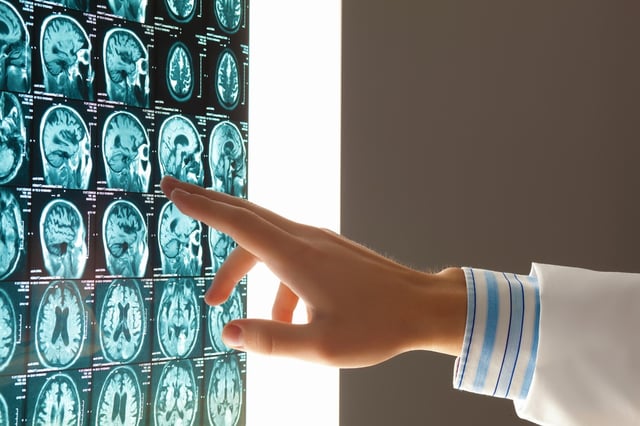
Improving stroke outcomes is all about recognizing stroke symptoms FAST and cutting the time between symptom onset and treatment. Ischemic strokes, which account for 88% of all stroke cases, leave patients with only a small three-to-four-and-a-half hour window in which they can receive medication, without suffering potentially permanent disability. When it comes to these patients, there is literally no time to lose.
At FHN Memorial Hospital, we made it our mission to get stroke patients the treatment they desperately need, in order to save their lives and livelihoods. Here are some strategies that worked for us, and can help any healthcare organization to improve their stroke outcomes:
1. Collaborate with EMS.
Stroke recognition and assessment can, and should, begin before a patient arrives at the hospital. We started a very successful collaboration with our local EMS providers, using a stroke assessment tool in ambulances to assess patients and call ahead to our facility, thus giving the hospital advance notice in the Emergency Department if stroke is suspected. A Stroke Alert system was put in place to page overhead of a possible stroke in the ED or in an inpatient unit. This quickly brings an expert team to the patient’s bedside to begin the process of assessment, diagnosis, and treatment, saving valuable time.
2. Centralize your patients and resources.
When stroke patients are scattered throughout the hospital, this presents obvious logistical challenges for your staff. One of the first steps in our stroke program was to move all stroke patients into one unit and to educate the nursing staff on stroke care for their patients. Today, our stroke patients benefit from having the resources, and expert nursing and rehabilitation care they need, all in one central location - right where and when they need them.
3. Implement a teleneurology program.
Don’t let physical distance come between patients and expert clinicians. Since 2013, we’ve used portable robot technology to give a core group of teleneurologists from around the country remote access to our patients’ bedsides. As a result of this program, our patients and providers now have access to top-notch neurologists 24/7 who provide support to our physicians on treatment options and care for the stroke patient.
4. Focus on FAST community education.
When patients don’t recognize stroke symptoms quickly, or hesitate in seeking treatment, it can cost them their independence and possibly their lives. Reach out to your community, and make sure they have the information to act promptly on their own behalf. After holding educational seminars and handing out refrigerator magnets with the FAST method for stroke detection, we saw more stroke patients showing up at the ED in time to give them the best treatment options available.
5. Choose an integrated EHR platform.
An integrated EHR can be one of your biggest sources of support in treating stroke patients. With our MEDITECH system, data flows seamlessly between the ED and inpatient setting, which means that clinicians don’t waste precious minutes searching for information as patients move throughout the care continuum. Order sets can also be created with stroke core measures and nationally accepted evidence-based assessments and treatments in place in order to improve patient care and outcomes. The less time providers spend on administrative tasks, the more time they have to successfully diagnose and treat their patients. And more time for stroke patients can mean all the difference in the world.
Interested in learning about MEDITECH's integrated approach to delivering critical care?



.jpg)
